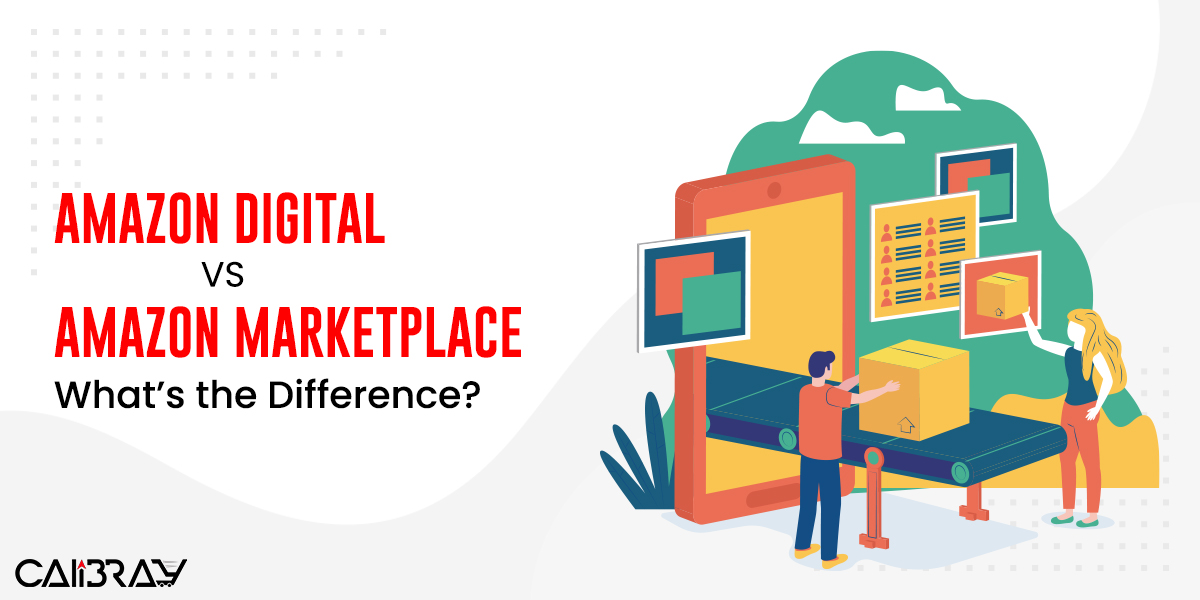Blog Inner Page
Amazon Digital vs. Amazon Marketplace: What’s the Difference?
26/04/2025 & 16:14 PM
|Uploaded By: Admin

If you’ve ever shopped or sold on Amazon, you’ve likely come across the terms Amazon Digital and Amazon Marketplace. While they may sound similar, they serve completely different purposes — and knowing the difference can save you confusion, time, and even money. In this blog, we’ll break down what Amazon Digital and Amazon Marketplace are, their key features, how they work, and which one is right for your needs — whether you're a buyer, seller, or content creator.
What is Amazon Digital?
Amazon Digital refers to all of Amazon’s digital services and content that can be streamed or downloaded. These are not physical products — they are subscriptions, apps, media, and cloud-based tools offered directly by Amazon.
Common Amazon Digital Services:
- Kindle eBooks from the Kindle Store
- Amazon Prime Video for movies and TV shows
- Amazon Music Unlimited for music streaming
- Audible Audiobooks
- Amazon Appstore for apps and games
- Amazon Drive & Amazon Photos for cloud storage
Amazon Digital is ideal for users looking to consume digital media or manage cloud services. Charges from "Amazon Digital" on your card are typically linked to these services.
What is Amazon Marketplace?
Amazon Marketplace is a platform which allows third-party Sellers, Retailers, Vendors, Small & Big Companies to sell products through Amazon. While Amazon sells its own items, most of the products listed on the platform actually come from independent sellers using the Amazon Marketplace.
Features of Amazon Marketplace:
- Sell physical products like clothes, electronics, home goods, and more
- Options for Fulfilled by Amazon (FBA) or Fulfilled by Merchant (FBM)
- Provides Business Tools for product listing, marketing, and customer service.
- Gives sellers access to Amazon’s huge Global customer base
Whether you're a small business or an individual seller, Amazon Marketplace is a great way to start your eCommerce journey.
Key Differences Between Amazon Digital and Amazon Marketplace
Here’s a clear comparison to understand the two services:
|
Feature |
Amazon Digital |
Amazon Marketplace |
|---|---|---|
|
Product Type |
Digital content (books, music, videos) |
Physical or digital goods from third-party sellers |
|
Seller |
Amazon itself |
Independent third-party sellers |
|
Delivery |
Instant download or streaming |
Physical shipping or digital delivery |
|
Examples |
Kindle eBooks, Audible, Prime Video |
Clothes, electronics, toys, home essentials |
|
Target Users |
Consumers of digital content |
Online sellers and product buyers |
Why Knowing the Difference Matters?
Understanding the difference helps you:
- Track purchases and subscriptions properly (avoid surprise digital charges)
- Choose the right platform to sell products or publish content
- Navigate Amazon’s ecosystem effectively as a consumer or seller
- Avoid subscription confusion, especially when reviewing billing statements
For example, if you’re seeing charges from "Amazon Digital", you’re likely paying for a digital subscription, not a physical order from a seller.
Conclusion
Amazon Digital and Amazon Marketplace may sound similar, but they cater to completely different purposes. Amazon Digital is for streaming, subscriptions, and digital content, while Amazon Marketplace is a massive platform for third-party sellers to reach customers worldwide.
Understanding how each works empowers you to:
- Shop smarter
- Sell more efficiently
- Navigate Amazon’s world like a pro
FAQs About Difference between Amazon Digital vs. Amazon Marketplace
What is Amazon Digital charge on my credit card?
It usually refers to a subscription or one-time purchase of digital content (like Kindle books or Prime Video).
Can I sell digital products on Amazon?
Yes, through Amazon KDP (Kindle Direct Publishing), Amazon Appstore, or Amazon Music/Audible platforms.
What percentage of Amazon sales come from the Marketplace?
Over 60% of Amazon’s product sales come from third-party sellers using the Amazon Marketplace.